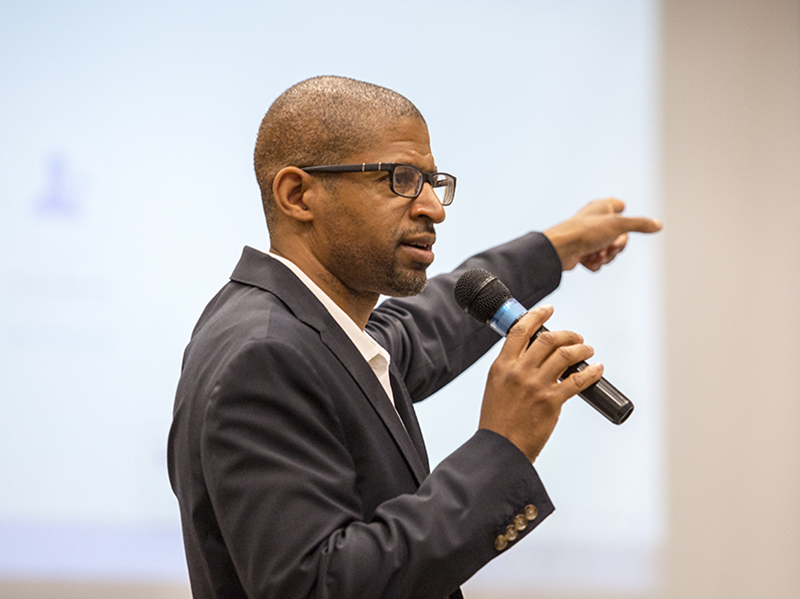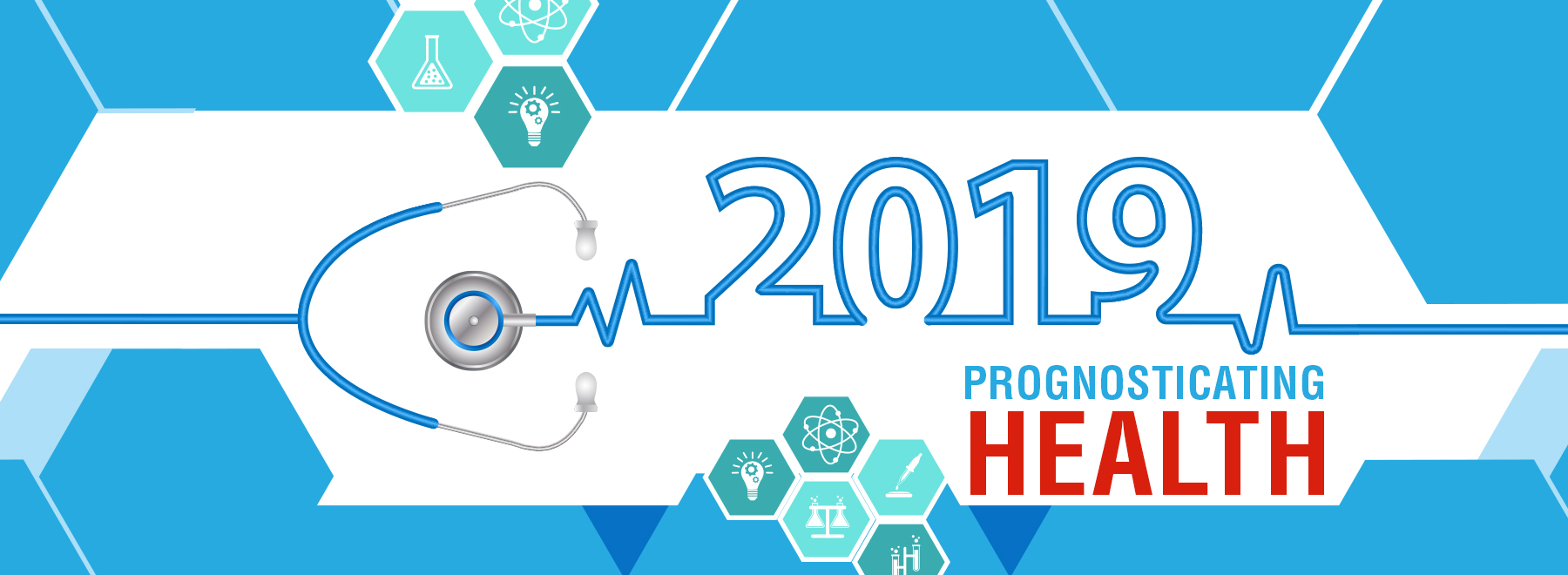HIT Center guru reviews 2019 medical innovation list
Published on Tuesday, January 1, 2019
By: Bruce Coleman
At the dawn of another brand new year, predicting what may lie ahead in the world of medicine can be a hit-or-miss proposition. One certainty among prognosticators, according to Terrence Hibbert, director of innovation at the University of Mississippi Medical Center, is an advancement in innovation.

Hibbert, leader of the institution’s Health Innovation and Transformation (HIT) Center, is a proponent of using innovation to help bring about a healthier Mississippi. So when the renowned Cleveland Clinic recently published a list of Top 10 Medical Innovations of 2019 as formulated by a panel of physicians and scientists at its 2018 Medical Innovation Summit, Hibbert couldn’t help but comment on the forecasts and what they might mean for citizens of our state.
“Many of these innovations will have a particular impact on the health of Mississippians and UMMC is both actively innovating and monitoring innovations from all over the world to find new solutions.”
The Cleveland Clinic list, in order of what the panel anticipated to be most important for the coming year, includes:
1. Alternative therapy for pain - Fighting the opioid crisis
In response to the nation’s “opioid epidemic,” fueled by chronic pain, that has resulted in more than 42,000 American deaths in 2016 alone, physicians across the nation are seeking clinically validated alternative therapies for their patients.
“This has a very strong impact on Mississippians,” Hibbert said. “The state is fourth in the nation for opioid prescriptions per capita.
“UMMC is leading the way in addressing this, especially for rural health.”
2. The advent of artificial intelligence in health care
No longer considered a fearful character like “Hal” of “2001: A Space Odyssey” fame, artificial intelligence is already helping clinicians make better decisions for patients.
“This technology is advancing quickly and will eventually have a huge impact on health care,” Hibbert said. “An intelligent computer will be able to assist patient care by presenting relevant information to clinicians who can then use their knowledge to prescribe treatments.
“It will also help with research, especially with pulling correlations from large data sets.”
3. Expanded window for acute stroke intervention
When it comes to effectively treating stroke, there’s no greater asset than a timely response. But there’s no better cure than prevention.
“We are learning a lot about how people get strokes and thus how to treat and eventually prevent them,” Hibbert said. For example, “UMMC is focusing on busting clots.”
4. Advances in immunotherapy for cancer treatment
A longstanding goal for many cancer researchers has been to weaponize the body’s own immune system to fight the dread disease. It’s a task that has proved to be much more easily said than done.
“Immunotherapy has had a long history of false promises,” Hibbert said, “but scientists are finally starting to wrap their arms around how to help the immune system fight cancer cells.”
In fact, he said the most recent Nobel Prize for Physiology went to two immunotherapy researchers.
5. Patient-specific products achieved with three-dimensional printing
For many scientists, 3-D printing has evolved at a rate that could only have been imagined a short few years ago. Now, medical devices can be “printed” so precisely that they can flawlessly match an individual patient’s anatomy.
“You’d be amazed at what people are able to print in 3-D,” Hibbert said. “It has gone beyond printing dental implants and into printing body parts.
“There is even research on printing organs.”
6. Virtual and mixed reality for medical education
Students today grow up in the “gaming” culture of VR and MR, so it only makes sense to enhance their medical education by expanding the use of tools they find easily relatable.
“The most obvious opportunity is in anatomy and physiology, where students can get inside a virtual heart to see how it works,” Hibbert said. “Beyond that, there is an app called ‘Osso VR’ that will help orthopaedic surgeons practice, say, a particular knee surgery hundreds of times before performing it on a human.
“VR will also have a hand in medical practice. There are already applications in physical therapy and neuromotor support and augmented reality applications that allow a surgeon to scan your particular body and map it virtually to improve surgical accuracy.”
The remaining innovations on the Cleveland Clinic’s list the use of a visor for prehospital stroke diagnosis (a technology that uses low energy frequency waves in both hemispheres to allow first responders to diagnose a stroke with 92 percent accuracy), innovations in robotic surgery (“Artificial intelligence is giving the robots new capabilities and increased precision,” Hibbert said), mitral and tricuspid valve percutaneous replacement and repair, and RNA-based therapies.
No matter its purpose, Hibbert said innovation is truly the rising tide that can lift all boats in health care for the coming year, particularly in Mississippi.



